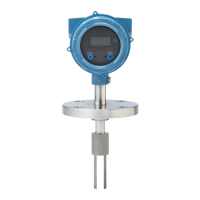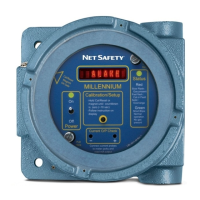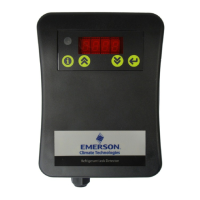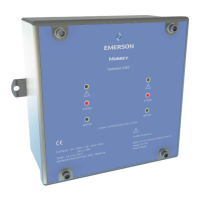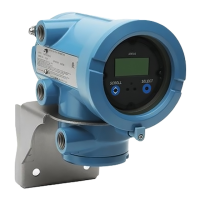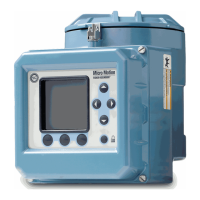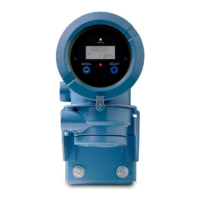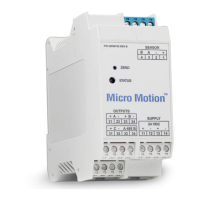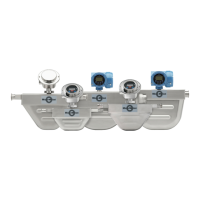Interaction of HART variables and transmitter outputs
The HART variables are automatically reported through specific transmitter outputs. They
may also be reported through HART burst mode, if enabled on your transmitter.
Restriction
One some devices, the PV and the primary mA output are fixed to a specific process variable and
cannot be changed.
HART variables and transmitter outputsTable 6-8:
HART variable Reported via Comments
Primary Variable (PV) Primary mA output If one assignment is changed, the other is changed auto-
matically, and vice versa.
Secondary Variable (SV) Secondary mA output, if
present on your transmitter
If you have a secondary mA output: If one assignment is
changed, the other is changed automatically.
If you do not have a secondary mA output: The SV must be
configured directly, and the value of the SV is available on-
ly via digital communications.
Tertiary Variable (TV) Not associated with an out-
put
The TV must be configured directly, and the value of the
TV is available only via digital communications.
Quaternary Variable (QV) Not associated with an out-
put
The QV must be configured directly, and the value of the
QV is available only via digital communications.
6.5.3 Configure burst communications
Burst mode is a mode of communication during which the transmitter regularly broadcasts
HART digital information to the network via the primary mA output.
Restriction
Burst communications, including trigger mode and event notification, is not available on HART/
RS-485. These features are supported only on HART/Bell 202.
• Configure HART burst messages
• Configure HART trigger mode
• Configure HART event notification
Configure HART burst messages
Display Not available
ProLink III Device Tools > Configuration > Communications > Communications (HART)
Field Communicator Configure > Manual Setup > HART > Burst Mode
Integrate the meter with the control system
Configuration and Use Manual 91

